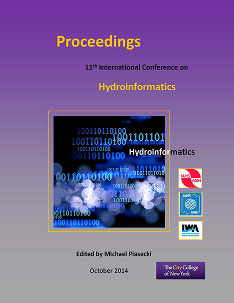Document Type
Presentation
Publication Date
8-1-2014
Abstract
Proactively managing high manganese (Mn) concentrations in drinking water supply reservoirs can be problematic for treatment plant operators. Typically, Mn monitoring is conducted manually and costly on a regular basis (e.g. weekly) throughout the entire year through water samplings and laboratory analysis. However, in the major water supply reservoir of the sub-tropical Gold Coast City region in Australia (i.e. Hinze Dam), a vertical profiling system (VPS) was installed and enabled a real-time data acquisition of many physical parameters of water. But these VPS parameters are not able to directly collect and analyse Mn concentrations. In the present study, a Decision Support System (DSS) has been developed. Firstly, the system utilises VPS parameters as inputs to autonomously predict Mn values using Seasonal Threshold Autoregressive Models, associated with Nonlinear Regression Models, in the epilimnion of Hinze dam, where the water is drawn, up to 7 days ahead. Secondly, a user-friendly management interface was created for water treatment plant operators, where the results are also displayed in the form of probabilities of exceeding key Mn threshold concentration values. Lastly, an optimised management decision was made for the effective water treatment. In this study, the models were calibrated and verified using 5 years data. The occurrence of the lake destratification event, the 7-day ahead Mn concentration values and the peak concentration Mn day(s) could be predicted with acceptable accuracy. Such a DSS would greatly reduce Mn monitoring costs and lead to a better management of Mn-related water treatment. The forecasting theory underpinning the DSS can also be applied to other water quality parameters.



Comments
Session R61, Reservoir Operations and Management II